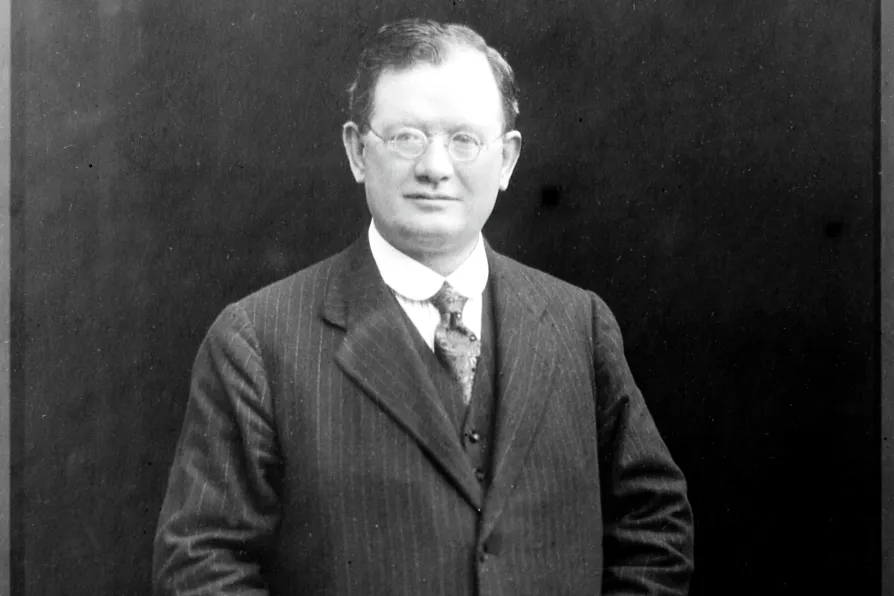SOLOMON HUGHES finds the government went along with a US scheme to distract from Israel’s lethal Gaza blockade with an impractical floating pier scheme – though its own officials knew it wouldn’t work
Building is the solution for much of our housing crisis – and will also help to address poverty, ill health, and even anti-social behaviour and alienation, writes KENNY MacASKILL

 John Wheatley. Photo: wellcomeimages.org/CC
John Wheatley. Photo: wellcomeimages.org/CC
OVER a century ago the 1924 election brought about the first-ever Labour government and reading about Ramsay MacDonald’s administration, the similarities with Keir Starmer’s now are evident.
A leader abandoning core values, concentrating on foreign policy and heading a beleaguered administration. Facing hostility and snobbery from the Establishment, MacDonald at least had the excuse of being a minority government bereft of Starmer’s huge majority.
One shining light though and where a legacy was left, despite the briefness of the administration’s tenure, was in housing. There, the Red Clydesider, John Wheatley, would make his mark. Only begrudgingly appointed health minister, he was far from a favourite of MacDonald’s. But in that portfolio, he commenced the building of council housing across the country.
It would be Nye Bevan and the 1945 Labour government which would bring in the NHS, but Wheatley’s portfolio then contained housing, along with public health, showing the clear links between the two issues — something remaining fundamental to this day with poor housing and ill health going hand in hand.
It wasn’t fortuitous coincidence that Wheatley proceeded with that mission. Housing, as much as industrial battles, had forged Red Clydeside, with the rent strikes as important as the shipyard and factory disputes and of even greater importance in electoral breakthrough.
Mary Barbour, along with other women, were as vital — as Willie Gallagher and the great Jimmy Maxton saw it — as the main political issue. Slums, overcrowding, evictions and rental costs were the social issues to the fore and driving the political agenda.
A century on there’s similarities in the occupant of No 10’s vacillations and obsessions but in the crisis in our communities, and not just on Clydeside. Homelessness, lack of available and affordable housing, dampness and rogue landlords, and rental costs are all factors resulting in councils the length and breadth of Britain struggling, with countless numbers of individuals and families suffering.
The crisis is visible all around in those sleeping rough on our streets, overcrowding, rental costs and lack of availability, along with the equally pernicious ill health, both mental and physical, inculcated by it.
Wheatley’s was a slow start, but it laid the groundwork for what would benefit millions over coming generations. “Wheatley Houses” is still viewed as the pick of the block all these years on and ensured that more than a generation on, council housing became the primary Scottish tenure, and of huge importance in England and Wales.
Of course, mistakes were also made, some understandable due to post-war enforced austerity, others simply unforgivable. Cheap breeze block building proved disastrous, as largely — with a few exceptions — did towers in the sky. Likewise shoddy builds, grim to live in and all too often in peripheral schemes which Billy Connolly waspishly described as “deserts with windaes.”
But it did mean that housing was available, affordable and in the main of decent quality, the length of Britain. In 1980 I applied to West Lothian District Council for a house and within a year, if not months, was offered a flat in my hometown, declining it only as I was moving jobs and location. A colleague in Glasgow was similarly offered a house in weeks and, though a challenged area, it was poverty not the housing stock at the root of the social ills.
That’s inconceivable now but then council housing was a tenure of choice, not just necessity for many with the Scottish Special Housing Association and other housing associations adding to the public-sector stock.
Then along came Thatcher with her mass sell-off of council housing along with a myriad of other political crimes. Not only was available stock disposed of at a huge discount, but councils were left with historic housing debt and reduced income with which to service it. It ensured that, other than specialist housing protected by law, building any more simply increased the black hole facing councils with costs never able to be recovered from a future buyer. Understandably building them simply stopped.
In Scotland Alex Salmond’s first administration quickly abolished Thatcher’s “right to buy” and once again commenced the building of council houses. But it has slowed and the scale of what’s being done is nowhere near adequate. Bringing back empty housing into stock and buying back former council homes are welcome but inadequate. The scale of Thatcher’s sell-off and the extent of current need dictating that.
The failure of Labour governments in Westminster to end right to buy in England and Wales is inexplicable and shameful. The crisis is worsening, and councils are floundering through lack of stock and the harm in both housing and health is worsening.
New builds for “affordable rent” — a euphemism — are simply enriching developers, fuelling landlordism and leaving many bereft. Similarly, its affecting employment, with many unable to take work where it’s available and their skills are needed. That’s not just in the Highlands or Lake District but with skilled workers unable to find affordable accommodation in many urban areas.
It’s why it should be build, baby, build for council stock. Building is the solution for much of our housing crisis and will also help to address poverty, ill health, and even anti-social behaviour and alienation. A century on from Wheatley’s actions they need replicated.
Government funds are limited but finance is available through pension funds and other lending bodies. Governments and councils are seen as safe bets with council housing a steady return on investment. That lending is available and not just for “mid-market rent” but council stock.
As a former council chief executive told me, allowing for local labour to be employed in construction, rents to be obtained by the council when built and money spent in the community by families living there. A virtuous circle for a vital social need.
A century ago John Wheatley showed what could be done. England needs to end the right to buy and both Westminster and Holyrood need to embark on a major council housebuilding drive.

CAROL WILCOX argues for the proper implementation of the land value tax, which could see unused plots sold off and landlords priced out of landlordism, potentially resolving the housing and planning crises

Our housing crisis isn’t an accident – it’s class war, trapping millions in poverty while landlords and billionaires profit. To solve it, we need comprehensive transformation, not mere tokenistic reform, writes BECK ROBERTSON

STEPHEN ARNELL examines whether Starmer is a canny strategist playing a longer game or heading for MacDonald’s Great Betrayal, tracing parallels between today’s rightward drift and the 1931 crisis











